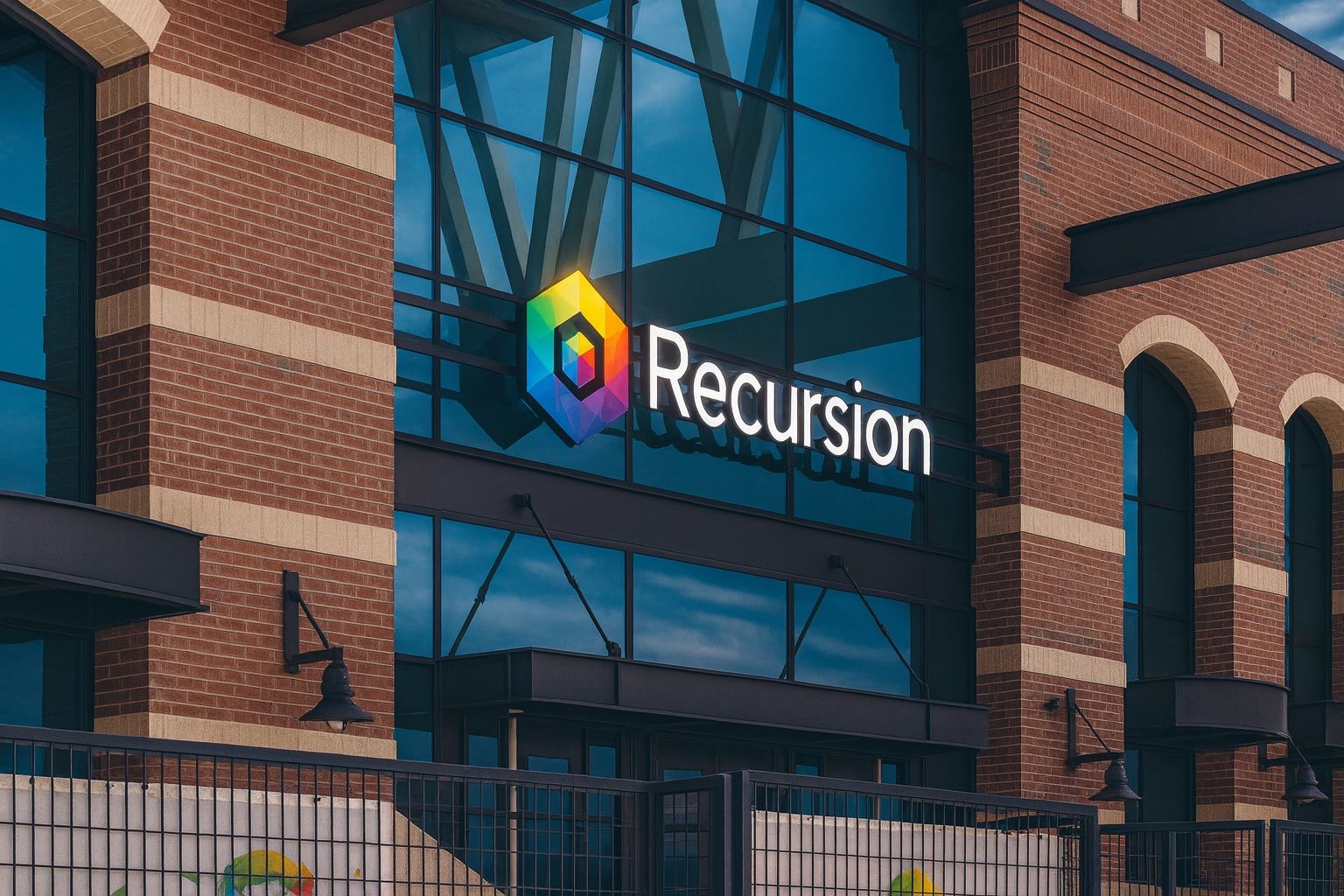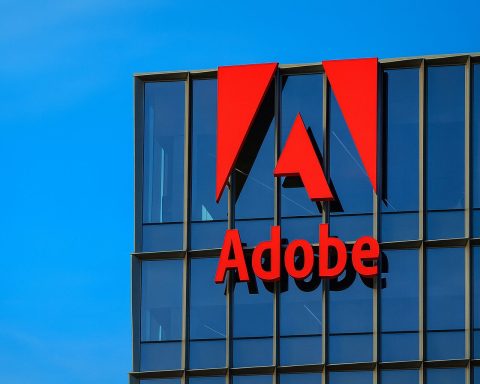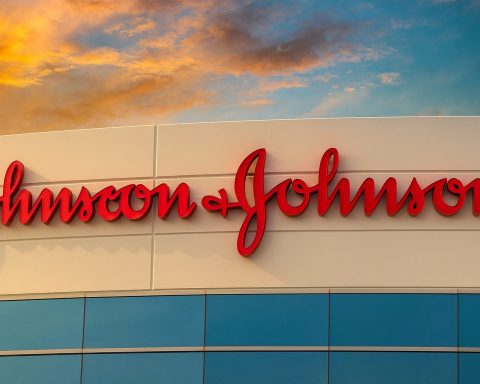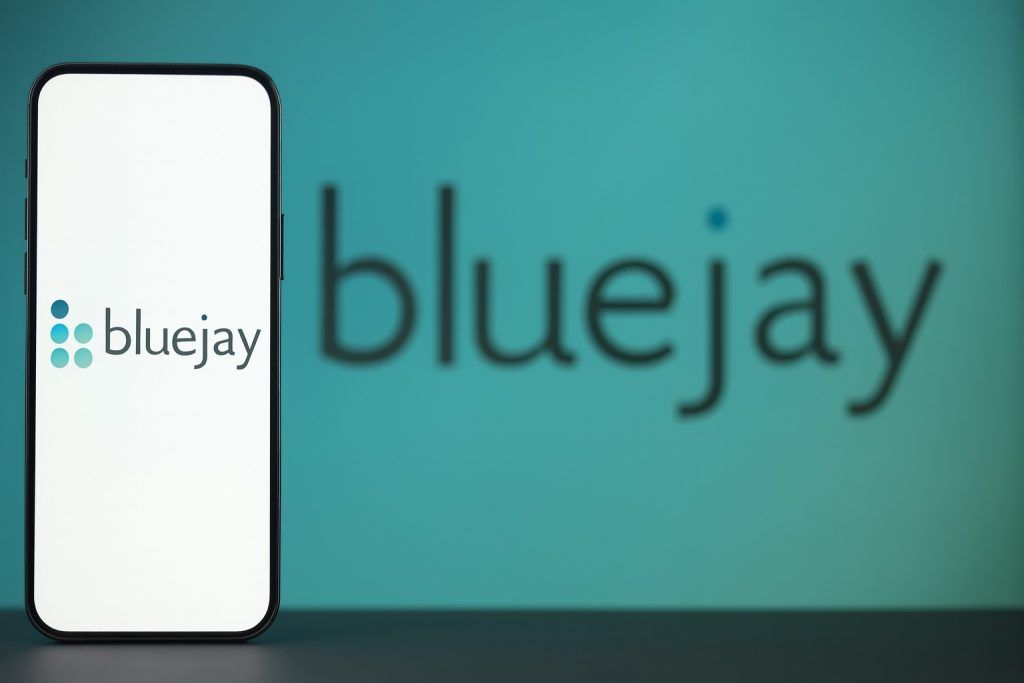- Stock Skyrockets on AI Buzz: Recursion Pharmaceuticals’ stock jumped ~16% on Oct 8, 2025 to around $6.08, rebounding sharply after a steep dip the day prior [1]. This followed a 5.4% drop on Oct 7 to $5.23, then a rapid surge back above $6 on renewed investor enthusiasm [2]. The shares now sit roughly mid-way between their 52-week low ($3.97) and high ($10.87), reflecting high volatility typical of this AI biotech [3].
- AI-Driven Drug Hunter: Recursion is a clinical-stage biotech that uses artificial intelligence and automation (its “Recursion OS” platform) to accelerate drug discovery [4]. A recent example: the company claims its AI platform moved a cancer drug candidate from idea to clinical trial in just 18 months vs ~42 months industry average [5] [6]. This tech-first approach positions Recursion at the forefront of the “TechBio” revolution, though it also means results (and revenues) hinge on cutting-edge R&D.
- Financials – Growth and Burn: In Q2 2025, Recursion’s revenue hit $19.2 million (+33% YoY), beating analyst estimates by ~25% [7]. Notably, this revenue comes entirely from research collaborations (e.g. a $7M milestone payment from Sanofi in Q2) rather than product sales. Heavy R&D investment drove a net loss of $171.9 million for the quarter, with research costs ballooning +74% year-over-year [8]. The company held ~$534 million in cash as of mid-2025, providing enough runway to fund operations into late 2027 after recent cost-cutting measures [9].
- Big Partnerships & “Powerhouse” Pipeline: Recursion has inked major alliances with Bayer, Roche/Genentech, and Takeda to co-develop drugs using its platform [10]. It even acquired UK AI drug startup Exscientia for ~$630M in late 2024 [11], bolstering its talent and pipeline. After the merger, Recursion pruned several projects (including two Phase II trials) in mid-2025 to focus on its most promising programs in cancer and rare diseases [12]. It also licensed in a new rare-disease drug (REV-102 for a bone disorder) to strengthen its portfolio [13] – moves aiming to build a “powerhouse pipeline” of high-priority drug candidates.
- Analyst Outlook – Cautious Optimism: Wall Street’s view on RXRX is mixed but tilts positive. As of early October, analysts are split between Buy and Hold, with no Sell ratings [14]. The average 12-month price target is about $6.5–$7, implying ~15–20% upside from current levels [15]. However, targets range from as low as $3 up to $10 [16], underscoring uncertainty. Experts note that meaningful clinical data from Recursion’s pipeline may not arrive until 2026 or later, so investors are betting on long-term potential [17].
Latest News (Oct 7–Oct 9, 2025)
- Oct 7, 2025 – Stock Dips on Caution: Recursion’s shares fell about 5.4% to $5.23 on Oct 7 amid a broader market pullback [18]. A Nasdaq/Zacks newswire that day highlighted the drop, noting Recursion was lagging the market and carried a Zacks Rank #4 (“Sell”) ahead of earnings [19]. The report projected a Q3 loss of ~$0.35 per share on ~$17.5M revenue [20], reflecting the company’s heavy R&D spending and likely contributing to investor caution.
- Oct 8, 2025 – Sudden 16% Surge: The very next day, RXRX stock whipsawed upward, closing around $6.09 (+16.4%) [21]. Notably, no company-specific news was released on Oct 8 – the spike was fueled by momentum and sentiment. A bullish Yahoo Finance piece (titled “A Bull Case Theory”) touted Recursion as an undervalued AI-biotech play, which emboldened retail buyers [22]. Simultaneously, a broader rally in biotech and AI stocks lifted all boats, and traders jumped on Recursion’s oversold technicals (its RSI had sunk into the high-20s by late August, a classic buy signal) [23]. The result was a swift FOMO-driven rebound after weeks of weakness.
- Oct 9, 2025 – Eye on AI Conference: In the wake of that jump, news surfaced that CEO Chris Gibson will speak on Oct 15 at a high-profile AI conference in Dubai, where he’ll discuss Recursion’s data-generating, automated experimentation approach [24]. Anticipation of insights or partnerships from this event helped stoke the Oct 8 rally [25]. Meanwhile, prominent market commentator Jim Cramer threw some cold water on the excitement: he remarked that Recursion has done “absolutely nothing” so far and that he needs to see real proof of concept before recommending the stock [26]. “We know NVIDIA’s in it,” Cramer said (referring to NVIDIA’s investment stake), “but we need to see something good… I’d hold off for now” [27]. This skeptical take highlights that, despite the recent buzz, some experts remain unconvinced until Recursion delivers tangible clinical results.
Stock Performance & Technical Analysis
After languishing through the summer, Recursion’s share price came to life in early October 2025. By Oct 8 the stock had rebounded to around $6.09 [28], putting it near the middle of its volatile 52-week range ($3.97 – $10.87) [29]. For context, RXRX had traded in the double-digits when AI hype in biotech peaked earlier in the year, then slid into the high-$3s during industry sell-offs [30]. Even after this week’s pop, shares remain ~30% lower than a year ago (amid a broader biotech downturn) [31]. Such dramatic swings are not unusual for a pre-revenue biotech stock – especially one at the intersection of two hot themes (biotech and AI) that can amplify volatility.
From a technical analysis standpoint, Recursion’s chart is sending mixed signals. The 50-day moving average is about $5.12, which now sits below the current price – a sign that short-term momentum has turned positive. However, the 200-day moving average around $5.84 is still above the stock, indicating longer-term downtrend resistance ahead [32]. The stock’s Relative Strength Index (RSI) is ~55, squarely in neutral territory (neither overbought nor oversold) [33]. Meanwhile, the MACD momentum indicator has just flipped slightly above its signal line (MACD ~0.10 vs. signal –0.01) [34], which is a tentative bullish crossover suggesting momentum is improving. In summary, RXRX’s recent rally has improved its short-term technical picture, but the stock will need to sustain gains above the mid-$5s to decisively break its longer-term downtrend. Traders should be prepared for continued volatility around news and key technical levels.
Company Overview: Business Model & Partnerships
Recursion Pharmaceuticals, Inc. (NASDAQ: RXRX) is a Salt Lake City-based biotech on a mission “to decode biology to radically improve lives” [35]. Unlike traditional drug developers, Recursion has built a “full-stack” drug discovery platform that fuses biology, robotics, and artificial intelligence. At its core is the Recursion Operating System (OS) – an integrated pipeline where automated labs conduct thousands of experiments on cells, producing massive image-based datasets that are then analyzed by machine learning models [36]. By generating its own proprietary data at an unprecedented scale and feeding it into AI algorithms, Recursion aims to identify therapeutic candidates far faster and cheaper than conventional methods. In essence, the company is attempting to “industrialize” drug discovery in the way tech companies approach software – a bold approach that has attracted both excitement and skepticism in the industry [37].
A key element of Recursion’s model is leveraging partnerships with pharma giants. Rather than trying to develop and market drugs entirely on its own (a very costly endeavor), Recursion often takes drug candidates it discovers and partners with larger pharmaceutical companies to carry them forward. The company has struck multi-year R&D alliances with the likes of Bayer, Roche’s Genentech, and Takeda [38]. In these deals, Recursion applies its AI platform to discover or optimize compounds in a given disease area, and the pharma partner provides upfront payments, research funding, and milestone payments as the projects advance. For example, Recursion’s collaborations have yielded milestone fees such as the $7 million from Sanofi in Q2 [39] and a partnership with Bayer (dating back to 2020) targeting fibrotic diseases [40]. This “AI + Big Pharma” partnership strategy brings in much-needed non-dilutive capital and drug development muscle, effectively subsidizing Recursion’s platform while sharing risk. It also validates Recursion’s technology in the eyes of investors when blue-chip pharma companies sign on.
Recursion has not shied from teaming up with technology leaders either. Notably, it built what it calls a biotech “supercomputer” in partnership with NVIDIA, leveraging NVIDIA’s GPUs to train Recursion’s large-scale neural networks on biological image data [41]. NVIDIA was impressed enough to take an equity stake in Recursion [42]. This tech collaboration underscores how Recursion straddles the worlds of biotech and high-tech; its success depends as much on computation and data as on wet-lab science.
Through these alliances – whether with pharma or tech – Recursion has positioned itself as a central player in the emerging AI-driven drug discovery ecosystem. If its platform consistently produces viable drug candidates, Recursion stands to earn milestone payments and royalties from partners, even before it has a marketed drug of its own. This partnership model is essentially Recursion’s business model: use AI to discover drugs faster in-house, then hand them off to deep-pocketed partners for costly clinical trials and commercialization, while collecting collaboration revenue to fund further innovation [43] [44].
Pipeline & Recent Developments
After several years of aggressive growth, Recursion’s R&D pipeline is now extensive – spanning from early-stage discovery programs to a handful of compounds in clinical trials. The late-2024 acquisition of Exscientia, a UK-based AI drug discovery firm, dramatically expanded this pipeline (and Recursion’s headcount) overnight [45]. Exscientia’s assets, combined with Recursion’s, gave the company dozens of drug programs in oncology, immunology, and rare diseases [46] – arguably putting Recursion in the top tier of AI-biotech players by pipeline breadth. However, management has since prioritized quality over quantity: in mid-2025 Recursion culled 4 lower-priority programs (including two Phase II trials) to concentrate resources on the most promising indications [47]. This strategic refocus trimmed some fat and reassured investors that Recursion wouldn’t stretch itself too thin [48].
Today, Recursion’s pipeline is focused on areas where there is high unmet need and where its platform has yielded strong early hits. For example, lead clinical candidates include REC-994 (for cerebral cavernous malformation, a neurological condition) and REC-2282 (for familial adenomatous polyposis, a hereditary cancer syndrome) – both in Phase II development [49]. Another program, REC-4881, targets a cancer-related pathway and is in mid-stage trials [50]. These drugs were internally discovered and then advanced with partner support (Recursion’s Genentech collaboration has focused on neuroscience, for instance [51]).
To augment its pipeline, Recursion has also shown a willingness to in-license or acquire assets discovered elsewhere. A recent example is REV-102, a drug for the rare bone disease hypophosphatasia, which Recursion licensed in 2025 to bolster its rare disease portfolio [52]. And as noted, the Exscientia takeover brought in not just that company’s AI technology, but also its experimental drug programs (some of which originated from Exscientia’s partnerships with firms like Celgene/BMS and Sanofi). By consolidating Exscientia, Recursion made a bold bet on scaling up its platform and pipeline under one roof [53].
It’s important to note that Recursion remains in the R&D stage – none of its drug candidates have reached the market yet, and most are several years (and clinical trial phases) away from potential approval. This means Recursion’s valuation rests on its pipeline’s future promise. Any positive trial results or new partnership announcements could be major catalysts, while setbacks (like trial failures) are key risks. Investors got a taste of this in mid-2025 when Recursion announced a 20% workforce reduction to curb its cash burn [54]; though a tough decision, this move (along with a one-time tax credit and some ATM stock sales) extended its cash runway by a couple of years, buying crucial time to deliver results [55]. The company forecasts that its current cash should last through Q4 2027 (barring big new deals or expenses) [56] – a relatively comfortable cushion in biotech land, intended to carry Recursion through initial readouts from key trials in 2025–2026.
Financial Health Snapshot
Recursion exemplifies the classic high-risk, high-reward biotech financial profile: rapid growth in research funding and collaborations, coupled with significant operating losses. The company is not yet profitable (and won’t be until it has marketed drugs), but its revenues are rising quickly thanks to partnership payments. In Q2 2025, Recursion recorded $19.2 million in GAAP revenue, a 33% jump year-on-year [57]. This handily beat analyst expectations (~$15.4M) [58]. Crucially, nearly all of this income was from collaboration milestones rather than product sales. For instance, $7M of the quarter’s revenue came from hitting a milestone in the Sanofi partnership [59]. Such deals validate Recursion’s platform, but also underscore its dependence on partners for near-term cash.
On the expense side, operating costs have ballooned as Recursion scales up. Q2 R&D expense was $128.6M, up 74% vs. the prior year [60]. This reflects the integration of Exscientia (which added labs, programs and staff) and continuing heavy investment in the Recursion OS platform and drug pipeline [61]. General & Administrative costs also jumped ~47% to $46.7M [62], as the company’s overall headcount and operations expanded post-merger. The bottom line: Recursion’s Q2 net loss widened to $171.9M (–$0.41 per share) [63], slightly worse than the year-ago quarter. While a net loss of that magnitude is expected for a pre-commercial biotech, it highlights why Recursion’s stock can swing so wildly – the company is spending aggressively today in hopes of future payoffs, and any hint that the strategy isn’t yielding progress could shake investor confidence.
The good news is that Recursion is well-capitalized for now. It ended Q2 with $533.8 million in cash, equivalents and restricted cash on the balance sheet [64]. After the mid-year cost cuts and careful budgeting, management stated that this war chest is sufficient to fund operations through late 2027 [65]. In other words, barring unforeseen circumstances, Recursion shouldn’t need to raise dilutive financing for a while. This multi-year runway is a major strategic asset, as not all cash-burning peers can claim the same stability. It gives Recursion time to advance multiple drugs through clinical trials and to continue refining its AI platform without the immediate pressure of returning to the capital markets.
Going forward, investors will be watching Recursion’s cash burn rate closely each quarter to ensure it stays on track. The company projected its full-year 2025 cash burn would be under $450M (excluding any new partnership inflows) and that 2026 burn would drop below $390M [66] thanks to the cost reductions. If Recursion can keep hitting partnership milestones (or sign new collaboration deals) to bring in additional cash, it will further ease funding concerns. Ultimately, though, the path to profitability runs through successful drug development: nothing would improve Recursion’s finances more than a breakthrough therapy reaching late-stage trials or approval, which could unlock milestone payments or licensing revenue in the hundreds of millions.
Competitor Landscape: Recursion vs. AI Biotech Peers
Recursion isn’t alone in trying to merge AI and biotechnology – it’s part of a vanguard of “AI drug discovery” companies seeking to disrupt pharma R&D. Understanding Recursion’s position means comparing it to key competitors and peers in the AI-driven drug discovery space:
- Schrödinger, Inc. (NASDAQ: SDGR): A pioneer in computational drug discovery, Schrödinger uses a physics-based software platform (augmented by machine learning) to model molecular interactions. It generates revenue by selling its simulation software to pharmaceutical clients and also runs an internal drug pipeline. Notably, Schrödinger co-discovered a promising KRAS inhibitor (with AI+physics methods) that it partnered with Lilly – a validation of its tech [67]. Unlike Recursion, Schrödinger focuses more on in silico design and less on running in-house wetlab experiments at scale. This “software-first” approach keeps Schrödinger’s costs lower, but means it doesn’t produce proprietary experimental data like Recursion does [68].
- Insilico Medicine: A private AI drug discovery firm often cited alongside Recursion as a leader in the field. Insilico’s AI platform has yielded a pipeline of ~31 programs (10 already in clinical trials) – one of the most prolific in AI-biotech [69]. It has inked partnerships with companies like Sanofi and achieved milestones such as nominating an AI-designed fibrosis drug now in Phase I. Insilico’s model is somewhat akin to Recursion’s in that it spans both software and wetlab work, though on a slightly smaller scale. Notably, Sanofi’s 2022 deal with Insilico (and AstraZeneca’s with Schrödinger) mirror Recursion’s strategy of partnering with Big Pharma for validation and cash [70].
- BenevolentAI (Euronext: BAI): A UK-based AI drug discovery company that went public via SPAC in 2022. BenevolentAI has a powerful AI knowledge graph and a collaboration with AstraZeneca targeting diseases like chronic kidney disease [71]. However, it has faced setbacks – several pipeline failures and a slumping share price in 2023–2024 forced the company to cut jobs and refocus. BenevolentAI’s struggles are a cautionary tale: despite a strong AI platform, drug development is unpredictable, and being an early mover in a hype-filled space doesn’t guarantee success. Recursion distinguished itself by acquiring one of its peers (Exscientia) outright, whereas BenevolentAI remains independent and is working to rebound from its stumbles [72].
- Absci Corp (NASDAQ: ABSI): Absci applies AI to biologics (protein-based drugs) discovery and design. It’s developing AI models to create novel antibodies and enzymes quickly. Absci has struck deals with Merck and others for specific AI-designed biologics [73]. While not a direct competitor on small molecules, Absci shows how broad the AI biotech field is – from small molecules (Recursion, Schrödinger) to biologics (Absci) to other modalities. Absci, like Recursion, remains in R&D stage with significant cash burn, and its stock has been volatile since its 2021 IPO.
- Others (Startups and Pharma Initiatives): Numerous startups like Atomwise, Valo Health, BioXcel Therapeutics (NASDAQ: BTAI), and XtalPi are exploring AI for drug discovery or repurposing [74]. Each has a niche focus – e.g. Atomwise specializes in deep learning for virtual screening, BioXcel uses AI to find new uses for existing drugs. Many big pharmaceutical companies are also building in-house AI teams or investing in these startups. Tempus (NASDAQ: TEM), while more focused on healthcare data/diagnostics, is another related player that has soared in value by applying AI to clinical data and then partnering with pharma (Tempus inked a $200M data partnership with AstraZeneca) [75] [76]. The common thread is an industry-wide belief that AI can dramatically cut the time and cost to develop new drugs – a recent Reuters analysis found experts expect AI and reduced animal testing could halve drug development timelines in coming years [77] [78]. This rising tide lifts all AI-drug companies, including Recursion, but also means the race is on to see who can deliver results (and revenue) first.
Where Recursion stands out is in its vertically integrated approach and sheer scale. It has built an end-to-end pipeline – from generating experimental data in-house, to machine-learning-driven discovery, to partnering on development – essentially becoming a one-stop shop for AI-enabled drug creation [79] [80]. This is expensive (as seen by its cash burn) but potentially gives Recursion a data moat and control over the process that point-solution competitors lack. Recursion’s ~$2.4 billion market cap (as of Oct 7) and large cash reserve also give it staying power that many smaller rivals (often dependent on venture funding) may lack [81]. For instance, some peers have had to downsize or struggle for funding, whereas Recursion’s 2021 IPO and follow-on offerings provided a capital buffer [82]. In short, Recursion is viewed as one of the leaders of the AI-biotech niche – often mentioned in the same breath as Schrödinger and Insilico in media coverage [83] – but it faces plenty of competition. The company’s bold moves (like acquiring Exscientia and investing in its own supercomputer) have put it ahead in some ways. Yet the ultimate prize – successfully bringing AI-discovered drugs to market – is one that no company in this sector has achieved to date. It’s a modern-day biotech gold rush, and Recursion is one of the best-equipped prospectors, albeit in a field full of other ambitious hopefuls.
(Regulatory Tailwind: It’s worth noting that regulators are increasingly supportive of AI in drug development. In 2025 the U.S. FDA announced plans to reduce reliance on animal testing in preclinical drug trials, encouraging advanced methods like AI modeling and “organ-on-chip” human cell systems [84]. The FDA even deployed an AI review tool of its own for drug data. This trend bodes well for companies like Recursion – it suggests the FDA is open to evidence from AI-driven experiments, which could speed up approvals. Of course, Recursion will still need to prove its drugs are safe and effective in humans, but the regulatory climate is gradually tilting in favor of innovative AI approaches [85].)
Analysts’ Takes and Future Outlook
Opinions on Recursion’s prospects span a wide spectrum, reflecting the company’s high potential and high uncertainty. Equity research analysts generally acknowledge Recursion’s innovative approach and the large opportunity in applying AI to biotech, but many urge caution given the early stage of its pipeline. According to Public.com data, as of Oct 8 the consensus rating on RXRX was a moderate “Buy” – out of 4 analysts covering the stock, 50% rate it Buy (or Outperform) and 50% rate it Hold, with 0 Sell ratings [86]. In other words, no one on the Street is overtly bearish on Recursion’s story, but roughly half are waiting on the sidelines to see more proof before fully buying in.
Price targets for the stock hover in the high-single digits. Recent reports put Recursion’s average 1-year target around $6.5 to $7.5, which is about 15– Twenty% above the current price [87] [88]. For instance, Needham’s Gil Blum reiterated a Buy rating in September with an $8 target, citing Recursion’s strong position in AI drug discovery and extended cash runway through 2027 [89] [90]. On the more conservative side, Morgan Stanley has maintained an Equal-Weight (Hold) with a ~$4.80 target, effectively valuing Recursion primarily on cash and near-term prospects [91]. Bank of America has a neutral view as well (Hold, ~$8 target) [92]. This yields a wide target range – some analysts’ low-end targets are as little as $3, while the high end reaches $10+ [93] – reflecting differing beliefs about how quickly (and successfully) Recursion’s AI-found drugs will progress.
Short-term, analysts are focused on milestones in the next 6–12 months. The company’s Q3 2025 earnings (due in early November) will be one checkpoint – not so much for revenue (since that will remain collaboration-based and relatively small), but for any updates on partnerships or pipeline progress. Wall Street expects Q3 revenue in the mid-teens of millions and a loss in line with Q2’s (mid-$0.30s per share) [94]. More crucial will be any guidance or commentary on upcoming clinical data. Recursion has guided that multiple programs will reach important readouts in 2025–2026 [95]. Gil Blum of Needham, for example, highlighted that anticipation is building for REC-617 (an oncology program) and fibroblast activation protein (FAP) inhibitor results in the coming 12–18 months [96]. Positive news on those fronts could validate Recursion’s approach and quickly shift sentiment.
Looking further out, the bull case is that Recursion’s AI platform could yield a steady stream of drug candidates and partnership deals, eventually leading to one or more breakthrough therapies on the market. Optimistic analysts and investors point to Recursion’s unique “data moat” (its huge proprietary dataset of cellular images) and its end-to-end integration as competitive advantages that are hard to replicate [97]. They envision Recursion becoming a sort of AI pharma factory that big drug companies rely on for innovation – with Recursion earning royalties and fees akin to a platform technology provider. If even one of Recursion’s AI-discovered drugs achieves FDA approval in coming years, it would be a game-changer for the company’s credibility (and financials). Bulls also note the intangibles: Recursion’s visionary leadership (CEO Chris Gibson) and its backing by savvy tech investors (like NVIDIA and venture funds) as signs that the company could be an outsized winner in the long run [98].
On the other hand, the bear case emphasizes that drug development remains a long, expensive road – AI or not. Skeptics like Jim Cramer have argued that Recursion still needs to prove that all its fancy technology can produce a real drug success [99]. Many of Recursion’s programs are early-stage, and the history of biotech is littered with failures in Phase II or III trials. Bears worry that Recursion might burn through its cash without a major win, or that larger competitors could catch up in the AI race. There’s also the question of focus: by running dozens of programs and collaborations at once, can Recursion effectively execute on all of them? The company’s recent pipeline pruning was a response to such concerns [100]. Moreover, as other companies adopt AI, Recursion will need to stay ahead of the curve to maintain its edge.
In summary, Recursion Pharmaceuticals offers a high-risk, high-reward proposition. It stands at the cutting edge of a potential revolution in how drugs are discovered, with a stock that can swing wildly on sentiment and speculative fervor. One analyst analogized that Recursion is to drug discovery what Tesla was to electric cars – a first mover marrying technology with a traditional industry, thus attracting huge excitement but also healthy skepticism [101]. The coming year or two will be pivotal: investors will be watching for concrete validation in the form of clinical results and possibly new big-name partnerships. If Recursion can demonstrate that its AI-derived drug candidates perform in the clinic, it could accelerate the company’s path to being an indispensable partner to Pharma (or even an acquisition target for a pharma giant looking to internalize AI capabilities [102]). Until then, the stock will likely trade on hope, fear, and the latest headlines. As of now, cautious optimism best describes the expert consensus – with a recognition that Recursion has immense long-term potential, tempered by the understanding that its journey is just beginning and not without peril.
Sources: Recent analysis and news from Tech Space 2.0 (TS2) [103] [104]; Reuters [105]; Yahoo Finance/InsiderMonkey [106] [107]; Nasdaq/GlobeNewswire releases [108]; DirectorsTalk Interviews [109] [110]; and company filings.
References
1. ts2.tech, 2. ts2.tech, 3. ts2.tech, 4. ts2.tech, 5. ts2.tech, 6. www.reuters.com, 7. ts2.tech, 8. ts2.tech, 9. ts2.tech, 10. ts2.tech, 11. ts2.tech, 12. ts2.tech, 13. ts2.tech, 14. www.directorstalkinterviews.com, 15. www.directorstalkinterviews.com, 16. www.directorstalkinterviews.com, 17. ts2.tech, 18. ts2.tech, 19. ts2.tech, 20. ts2.tech, 21. www.insidermonkey.com, 22. ts2.tech, 23. ts2.tech, 24. www.insidermonkey.com, 25. www.insidermonkey.com, 26. www.insidermonkey.com, 27. www.insidermonkey.com, 28. www.insidermonkey.com, 29. ts2.tech, 30. ts2.tech, 31. ts2.tech, 32. www.directorstalkinterviews.com, 33. www.directorstalkinterviews.com, 34. www.directorstalkinterviews.com, 35. ts2.tech, 36. ts2.tech, 37. ts2.tech, 38. ts2.tech, 39. ts2.tech, 40. ts2.tech, 41. www.insidermonkey.com, 42. www.insidermonkey.com, 43. ts2.tech, 44. ts2.tech, 45. ts2.tech, 46. ts2.tech, 47. ts2.tech, 48. ts2.tech, 49. www.directorstalkinterviews.com, 50. www.directorstalkinterviews.com, 51. www.directorstalkinterviews.com, 52. ts2.tech, 53. ts2.tech, 54. ts2.tech, 55. ts2.tech, 56. ts2.tech, 57. www.nasdaq.com, 58. www.nasdaq.com, 59. www.nasdaq.com, 60. www.nasdaq.com, 61. www.nasdaq.com, 62. ts2.tech, 63. www.nasdaq.com, 64. www.nasdaq.com, 65. ts2.tech, 66. ts2.tech, 67. ts2.tech, 68. ts2.tech, 69. ts2.tech, 70. ts2.tech, 71. ts2.tech, 72. ts2.tech, 73. ts2.tech, 74. ts2.tech, 75. ts2.tech, 76. ts2.tech, 77. www.reuters.com, 78. www.reuters.com, 79. ts2.tech, 80. ts2.tech, 81. ts2.tech, 82. ts2.tech, 83. ts2.tech, 84. ts2.tech, 85. ts2.tech, 86. ts2.tech, 87. www.directorstalkinterviews.com, 88. ts2.tech, 89. www.insidermonkey.com, 90. www.insidermonkey.com, 91. www.insidermonkey.com, 92. www.insidermonkey.com, 93. www.directorstalkinterviews.com, 94. ts2.tech, 95. www.insidermonkey.com, 96. www.insidermonkey.com, 97. ts2.tech, 98. www.insidermonkey.com, 99. www.insidermonkey.com, 100. ts2.tech, 101. ts2.tech, 102. ts2.tech, 103. ts2.tech, 104. ts2.tech, 105. www.reuters.com, 106. www.insidermonkey.com, 107. www.insidermonkey.com, 108. www.nasdaq.com, 109. www.directorstalkinterviews.com, 110. www.directorstalkinterviews.com










